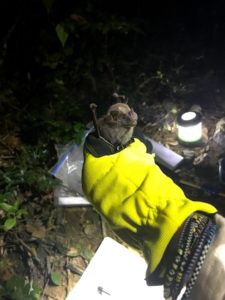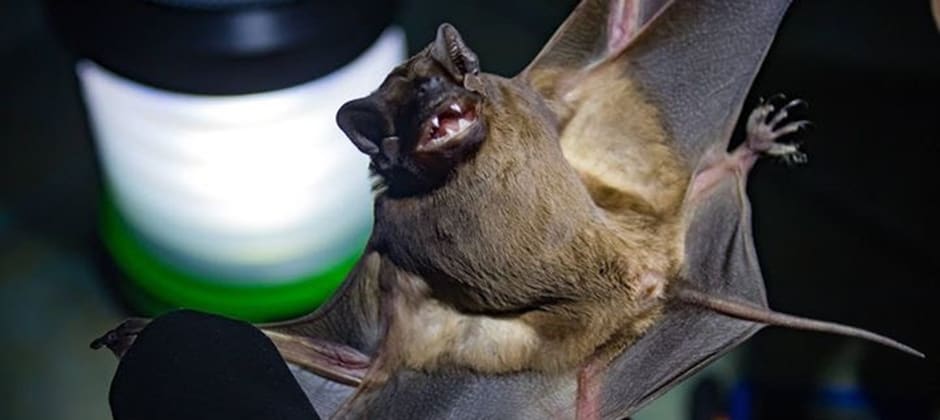Share this article
Hurricanes blow bats off regular habits for months
Species in areas affected by hurricanes are often seen to co-evolve with the disruption to the landscape, but that doesn’t mean they’re not affected by them.
TWS member Jessica Nagel looked into how hurricanes may affect bat species in the Caribbean. In preliminary results she presented in a poster session at the 2019 Joint Annual Conference of the American Fisheries Society and The Wildlife Society in October, Nagel found that two back-to-back hurricanes that struck the island of St. Thomas in the Virgin Islands disrupted bats’ activity patterns.
“There are a lot of gaps about what we know about what happens to them, where they go during these kinds of events,” said Nagel, who was a graduate student in marine and environmental science at the University of the Virgin Islands while conducting this research.
Nagel’s supervisor, Renata Platenberg, an adjunct professor at the university, had been surveying bats and using recording devices that can pick up ultrasound for years when Hurricane Irma and Hurricane Maria both struck the island in September 2017.

The first Jamaican fruit bat captured nine months after hurricanes Irma and Maria by researchers in June 2018. ©Jessica Nagel
Two weeks after the second storm passed, researchers put the devices back up and continued to record the bat sounds. Platenberg also continued to conduct monthly mist net surveys of bats on the island, including three fruit-eating species: the Jamaican fruit bat (Artibeus jamaicensis), the Antillean fruit-eating bat (Brachyphylla cavernarim) and the red fruit bat (Stenoderma rufum), as well as the insect-eating velvety free-tailed bat (Molossus molossus) and the fish-eating greater bulldog bat (Noctilio leporinus). The red fruit bat is listed as near threatened by the International Union for Conservation of Nature.
The mist net surveys showed a complete absence of Jamaican fruit bats after the storms destroyed many fruit trees in the area.
“You would expect a Category 5 to wipe out all the vegetation, so you would expect the fruit bats would have a problem,” Nagel said.
Aside from the surveys, which Nagel said are currently still inconclusive due to small sample size, she also heard anecdotes from people on the island about fruit bats displaying uncharacteristic behavior.
People reported bats breaking into screen doors and entering their houses to find available food sources, she said. In fact, when the researchers placed bananas outside, fruit bats swarmed them, which is also uncharacteristic behavior for the species.
Nagel then used a program to identify the different sounds of bat species recorded over thousands of hours. She found that the devices only really picked up the sounds of the insectivore velvety free-tailed bat, since the other species didn’t use ultrasound as much to communicate.
Sounds from the velvety free-tailed bats were much less common on one of the study sites and more common on the other site.
While these results are still preliminary, Nagel said it could mean the bats shifted their preferred habitat, possibly due the storms destroying their roosts.
The disturbance doesn’t seem to be permanent, though. Nagel said the Jamaican fruit bats are slowly returning, according to more recent surveys. But future research would need to confirm the effects hurricanes have on bat species in the areas, including surveys of surrounding vegetation, and recordings that pick up normal sounds as well as ultrasound.
Header Image: Researchers check a velvety free-tailed bat for sex, wingspan and body condition after capturing it in St. Thomas. ©Joseph Townsend








